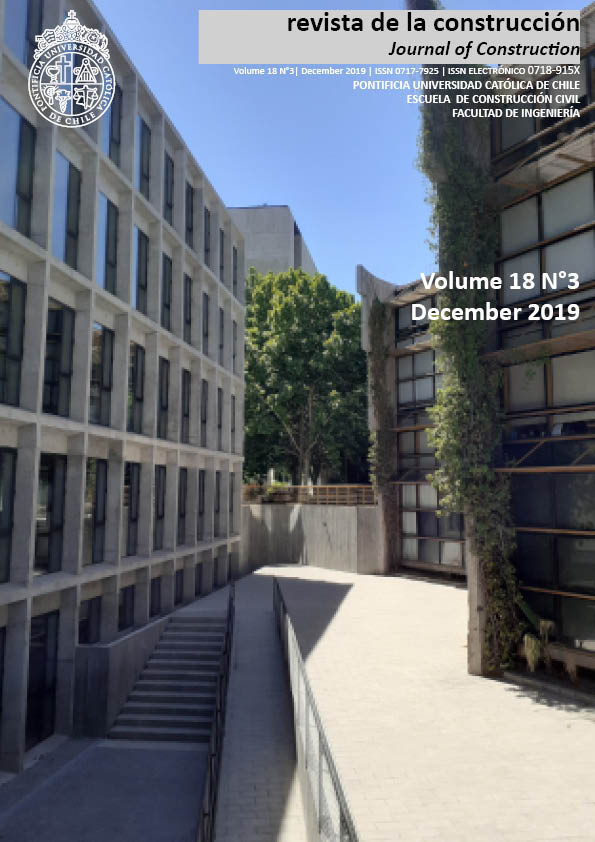Study of chloride penetration profiles and surface chloride content of concrete structures exposed to marine environment evaluated at different exposure times
DOI:
https://doi.org/10.7764/RDLC.18.3.545Keywords:
durability, marine environment, chlorides, concrete, diffusionAbstract
Nowadays, some studies have shown the increasing chloride content of concrete surface (Cs) exposed to marine environments over time. To evaluate this behavior, a comparative analysis was conducted between the chloride profiles in tetrapods located in southern Brazil, obtained from samples extracted at 5 and 9.5 years from four microenvironments To this end, the equation of Fick's second lawconsiders the time-dependent Cs variation, a model was prepared for each exposure time profile measured from each microenvironment, which considered the Cs variation since it increased significantly from 5 to 9.5 years. The models obtained from the profiles measured at 5 years were used to estimate the profile at the exposure time of 9.5 years and then compared with the real profiles measured at 9.5 years. The same procedure was used for the profiles measured at 9.5 years, that is to say, a 5-year profile was estimated and compared with a profile measured at the same exposure time. This shows the efficiency of the model. According to the research results, profiles of about 5 years are still too premature to be used as an estimate of the residual useful life of a structure, even considering the Cs variation. However, profiles of approximately ten years can be used, and their Cs values may increase. Therefore, research of the Cs values must continue to obtain the corresponding older chloride profiles to assess the behavior of the curves and the efficiency of the suggested model.
Downloads
Published
How to Cite
Issue
Section
License

This work is licensed under a Creative Commons Attribution-NonCommercial-NoDerivatives 4.0 International License.





